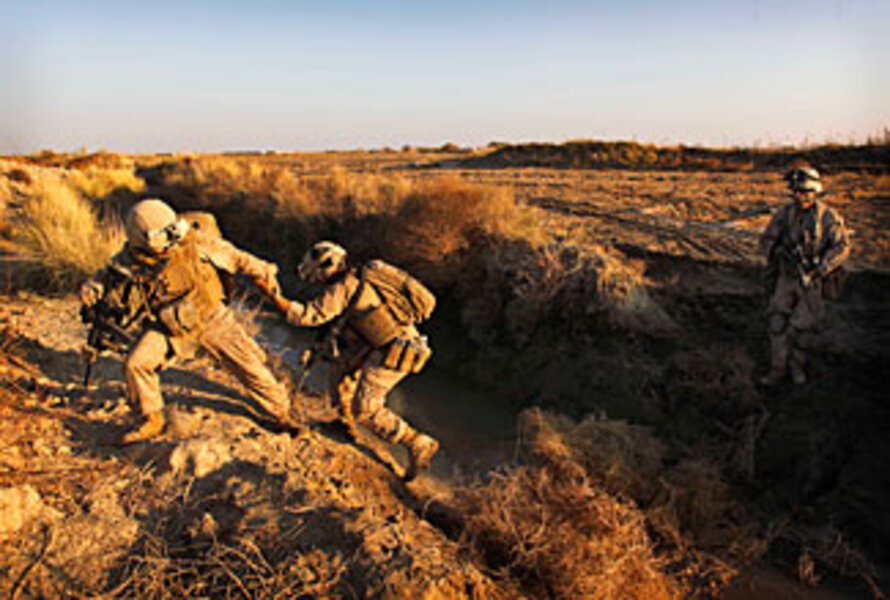Gates, other US officials clarify timeline for Afghanistan pullout
Loading...
| Washington
Republicans can mostly live with President Obama's new strategy for Afghanistan. But they continue to stumble over the July 2011 timeline for beginning to withdraw troops.
Since Tuesday, when Mr. Obama announced his strategy to deploy 30,000 additional troops to Afghanistan, administration officials have sought to clarify just what that timeline means. That's in response to concerns from conservative lawmakers and military experts who say that putting a deadline on the American commitment undermines the strategy. Obama says that logic is faulty.
For military experts and many conservatives, the thinking goes like this: Right now, many Afghans are trying to pick a winner – side with the Taliban and assume all the risk that entails, or side with the Americans (and the Afghan government and allied troops) and risk being abandoned come 2011.
Those fence-sitters may decide it's better to stick with the Taliban than bet on the American horse because the Americans will ultimately leave. Siding with a force that won't be around for a very long time could be dangerous.
In a counterinsurgency, protecting the population and weakening the enemy come by luring those fence-sitters to your side, thus isolating the true insurgents and weakening their power. The Taliban is fond of telling people: "The Americans have the wristwatches, but we have all the time."
"That feeds into that," says one staffer on Capitol Hill, referring to the July 2011 timeline.
"The White House's rationalization for this is incorrect," agrees Fred Kagan, a senior fellow at the conservative American Enterprise Institute, a think tank in Washington.
Mr. Kagan, who helped craft the "surge" strategy for Iraq in 2006, says Obama's new strategy is mostly sound, but he has concerns about this aspect of it.
"It will certainly be used by our enemies that the American commitment is limited," he says.
But the administration's thinking flouts that logic, seeing more value in setting deadlines to get things done than agreeing to what may amount to a political and not a military tactic.
"The logic of the Taliban waiting everything out subscribes to the logic that we will be there forever," said one senior administration official this week. "This is not an open-ended commitment."
Defense Secretary Robert Gates, who helped to broker the deal on Afghanistan, has in part been successful in motivating his Pentagon bureaucracy by setting deadlines. He has said that is one of the few ways to get things done within a bureaucracy often paralyzed by inertia. Ditto for Afghanistan.
The 2011 deadline is a hard-to-achieve goal, Mr. Gates says, but it gives plenty of time for the Afghan government and security forces to begin to stand up.
"That transition has to occur, I think we can all agree on, and a surge is a surge so it's a reasonable time frame to achieve the effects that we want to achieve," he says.
The American commitment to the region is nevertheless a long one, says Michael Vickers, assistant secretary of defense for Special Operations and Low Intensity Conflict.
That said, administration officials acknowledged this week that the rollout of that aspect of the strategy was not as clear as it should have been.
Obama's speech glossed over the issue, leaving administration officials like Gates to clarify. In fact, Pentagon officials tweaked the language Gates used to describe the timeline from one day of testimony to the next.
On Wednesday, the day after Obama's speech, Gates said the handover of security responsibility in July 2011 would begin "district by district."
By Thursday, Gates' answer was a bit more nuanced: "July 2011, the time at which the president said the United States will begin to draw down our forces, will be the beginning of a process, an inflection point, if you will, of transition for Afghan forces as they begin to assume greater responsibility for security."
-----
See also:
NATO countries pledge 7,000 more troops for Afghanistan
Gates: Afghanistan surge could require more than 30,000 troops





